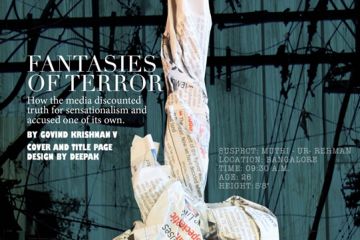
The world suddenly tilted. Even before Haneesha’s eyes
snapped open, her ears registered the sudden silence in the car, as if everyone
was holding their breath. Before she could lift her head from the lap of the
girl sitting on her right, the car staggered on its wheels. She found her eyes
level with the windows.
Diagonal is the only word Haneesha can find to describe the
way the highway looked as the Maruti Swift lurched towards the divider at over
120 kilometres per hour (kmph). The





